SEAT Tarraco vs VW Tiguan – Hvilken bil passer best for deg?
Begge modellene har sine styrker – men hvilken passer best for deg?
Sammenlign ytelse, forbruk, pris og plass direkte: SEAT Tarraco eller VW Tiguan?
The automotive world is continuously evolving, and for buyers searching for a versatile SUV, the SEAT Tarraco and VW Tiguan stand out in an increasingly crowded market. Both vehicles offer a blend of performance, technology, and practicality, yet each comes with its unique characteristics. This comparison aims to delve into their technical aspects and innovative features to help you make an informed decision.
Engine Options and Performance
Starting with powertrains, the SEAT Tarraco offers a respectable selection of engines, ranging from a 1.5-liter petrol to a more robust 2.0-liter diesel option. The available outputs range from 130 HP to 200 HP, ensuring that buyers can choose a model that suits their driving style. Acceleration figures for the Tarraco are competitive, with some variants achieving 0-100 km/h in as little as 8.2 seconds.
On the other hand, the VW Tiguan presents an even broader variety of engine choices, including petrol mild-hybrid, plug-in hybrid, and diesel options. From a 1.5-liter engine producing 130 HP up to an impressive 272 HP for those seeking high performance, the Tiguan is equipped to deliver. Its faster variants can rocket from 0-100 km/h in just 5.9 seconds, showcasing its sporty potential. With a maximum torque of up to 400 Nm, the Tiguan excels in both acceleration and towing capabilities.
Transmission and Drive Types
Both models offer a similar approach to transmission, featuring a dual-clutch automatic gearbox that ensures quick and efficient gear changes. The SEAT Tarraco is available in front-wheel drive and all-wheel drive configurations, providing versatility based on driving conditions. Similarly, the VW Tiguan follows suit with options for front-wheel and all-wheel drive, appealing to those who may venture off the beaten path.
Fuel Efficiency and Environmentally Friendly Options
When it comes to fuel efficiency, the Tarraco shows promising figures, with some models achieving as low as 6.1 L/100 km. The inclusion of eco-friendly engines in the Tiguan lineup includes plug-in hybrids that achieve astonishingly low consumption rates of just 0.4 L/100 km, thanks to their electric capabilities. The Tiguan's electric range of up to 113 km enhances its eco-friendly credentials, making it an attractive option for environmentally conscious consumers.
Interior Comfort and Technology
Interior space is a high priority for both models, and the Tarraco shines with a trunk capacity of 652 liters, perfect for families and travelers. The Tiguan follows closely behind with a still respectable capacity of 490 liters. Both vehicles accommodate five passengers comfortably, designed with user-friendly technology interfaces, including infotainment systems that are intuitive and responsive.
High-end materials and thoughtful ergonomics give both cars a premium feel, but the Tiguan edges out with more advanced technology features such as a fully digital cockpit and the latest Driver Assistance Systems. This includes adaptive cruise control, lane assist, and a host of other innovations enhancing safety and convenience.
Exterior Design and Dimensions
From a visual standpoint, the SEAT Tarraco boasts a modern and dynamic design, with sporty lines and an imposing front grille that exudes confidence on the road. With dimension of 4539 mm in length, 1842 mm in width, and 1658 mm in height, it provides an aggressive silhouette that appeals to the youthful demographic.
The VW Tiguan, slightly larger at 1859 mm in width, presents a more classic SUV appearance, balancing elegance with muscularity. Both SUVs are designed to attract attention while maintaining functional aerodynamic efficiency.
Conclusion: Which SUV Takes the Crown?
In conclusion, both the SEAT Tarraco and VW Tiguan offer impressive attributes that cater to the modern SUV buyer. If you prioritize raw performance and advanced technology, the Tiguan may be the way to go, particularly with its extensive engine options and hybrid offerings. However, if you lean towards practicality with slightly more storage space and an appealing design, the Tarraco stands out as an excellent choice.
Ultimately, the decision between these two remarkable SUVs will come down to personal preferences, driving habits, and budget. It’s worth taking both for a test drive to find out which model fits your lifestyle best.
Her blir det konkret: De tekniske forskjellene i detalj
Alt i alt viser VW Tiguan seg å være bare en svak fordel og sikrer seg dermed tittelen som DriveDuel Champion.
Den utmerker seg med en bedre totalpakke og er den mest allsidige bilen i hverdagen.
SEAT Tarraco
Tarraco er SEATs imponerende SUV som kombinerer stil med romslighet, noe som gjør den til et utmerket valg for familier med aktive livsstiler. Med sitt tidløse design og komfortable interiør skaper Tarraco en behagelig kjøreopplevelse, både på landeveien og i byen. Den gir også et godt utvalg av moderne teknologiske funksjoner, noe som tilfører ekstra verdi til det daglige bilholdet.
detaljer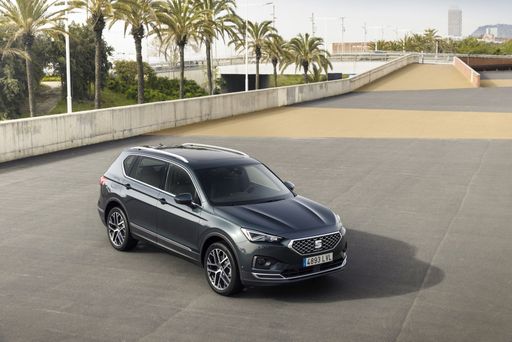 @ SEAT
@ SEAT
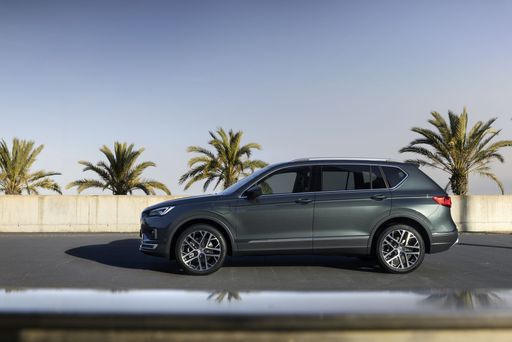 @ SEAT
@ SEAT
 @ SEAT
@ SEAT
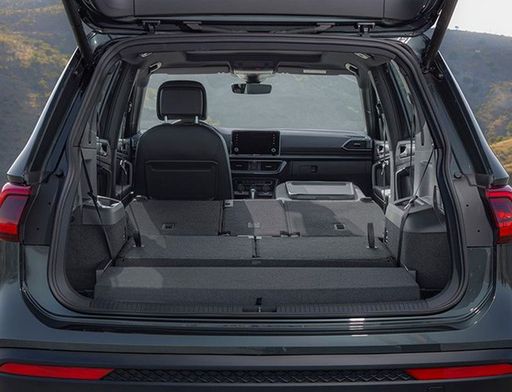 @ SEAT
@ SEAT
VW Tiguan
Volkswagen Tiguan er en populær kompakt SUV som kombinerer stil og funksjonalitet på en imponerende måte. Med sitt romslige interiør og komfortable sitteplasser, er den perfekt for både bykjøring og lengre turer. Den moderne designen og avanserte teknologi gjør Tiguan til et attraktivt valg for bilkjøpere som verdsetter kvalitet og brukervennlighet.
detaljer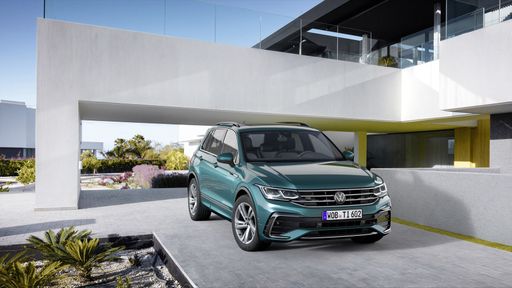 @ Volkswagen
@ Volkswagen
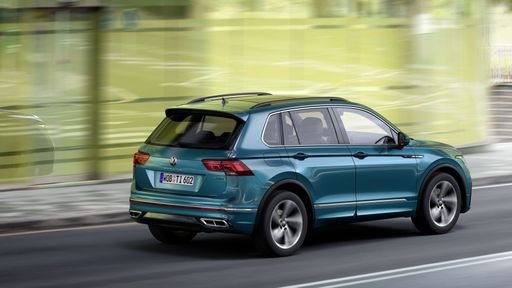 @ Volkswagen
@ Volkswagen
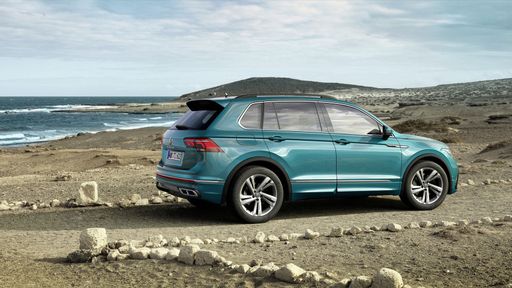 @ Volkswagen
@ Volkswagen
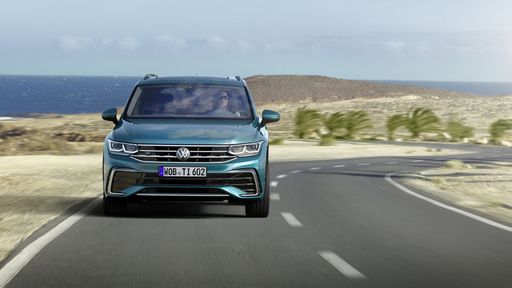 @ Volkswagen
@ Volkswagen
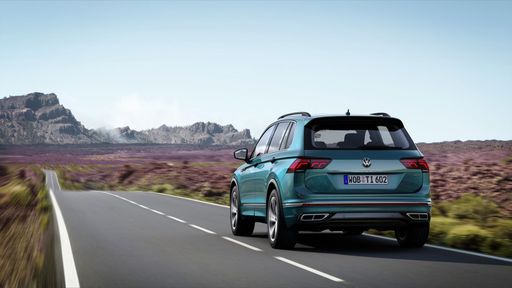 @ Volkswagen
@ Volkswagen
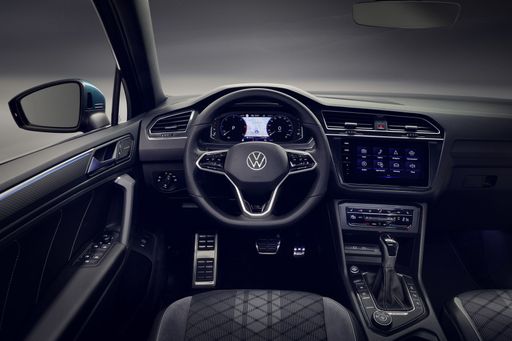 @ Volkswagen
@ Volkswagen

|

|
|
|
|
Kostnader og forbruk |
|
|---|---|
|
Pris
-
|
Pris
38300 - 60500 €
|
|
Forbruk L/100km
-
|
Forbruk L/100km
0.4 - 8.4 L
|
|
Forbruk kWh/100km
-
|
Forbruk kWh/100km
-
|
|
Elektrisk rekkevidde
-
|
Elektrisk rekkevidde
119 - 129 km
|
|
Batterikapasitet
-
|
Batterikapasitet
19.70 kWh
|
|
co2
-
|
co2
8 - 190 g/km
|
|
Tankkapasitet
-
|
Tankkapasitet
45 - 58 L
|
Mål og karosseri |
|
|---|---|
|
Karosseri
-
|
Karosseri
SUV
|
|
Seter
-
|
Seter
5
|
|
Dører
-
|
Dører
5
|
|
Egenvekt
-
|
Egenvekt
1599 - 1890 kg
|
|
Bagasjerom
-
|
Bagasjerom
490 - 652 L
|
|
Lengde
-
|
Lengde
4539 mm
|
|
Bredde
-
|
Bredde
1842 - 1859 mm
|
|
Høyde
-
|
Høyde
1656 - 1658 mm
|
|
Maks bagasjerom
-
|
Maks bagasjerom
1486 - 1650 L
|
|
Nyttelast
-
|
Nyttelast
460 - 533 kg
|
Motor og ytelse |
|
|---|---|
|
Motortype
-
|
Motortype
Plug-in hybrid, Bensin, Bensin MHEV, Diesel
|
|
Girkasse
-
|
Girkasse
Automat
|
|
Gir detalj
-
|
Gir detalj
Automatisk dobbeltclutch
|
|
Drivtype
-
|
Drivtype
Forhjulsdrift, Firehjulsdrift
|
|
Effekt hk
-
|
Effekt hk
130 - 272 hk
|
|
Akselerasjon 0-100km/t
-
|
Akselerasjon 0-100km/t
5.9 - 10.6 s
|
|
Maks hastighet
-
|
Maks hastighet
198 - 242 km/h
|
|
Dreiemoment
-
|
Dreiemoment
220 - 400 Nm
|
|
Antall sylindre
-
|
Antall sylindre
4
|
|
Effekt kW
-
|
Effekt kW
96 - 200 kW
|
|
Slagvolum
-
|
Slagvolum
1498 - 1984 cm3
|
Generelt |
|
|---|---|
|
Modellår
-
|
Modellår
2024 - 2025
|
|
CO2-effektivitetsklasse
-
|
CO2-effektivitetsklasse
B, G, D, E, F
|
|
Merke
-
|
Merke
VW
|
Hvilke drivverksalternativer tilbyr VW Tiguan?
Modellen tilbys med Forhjulsdrift eller Firehjulsdrift.
De viste prisene og dataene er estimater basert på tyske listepriser og kan variere avhengig av land. Denne informasjonen er ikke juridisk bindende.
